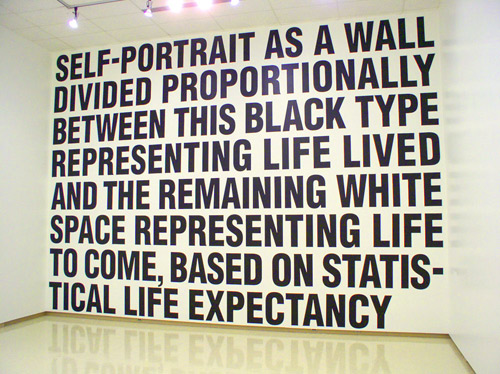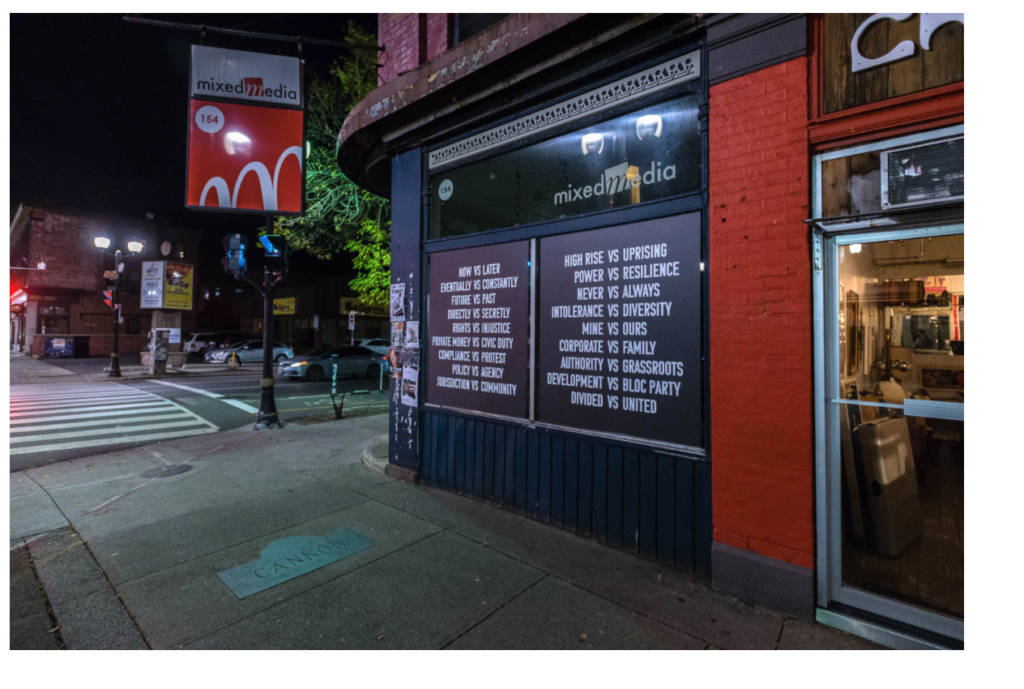Summary of Work in Week 3:
- Look at the artworks and videos below
2. Read the article from Canadian Art.
3. Make a banner, hang it, and put a photo and description on the blog. (details below)
______________________________________
LOOK AT: Artists who use text in their work including: Micah Lexier, Lenka Clayton, Laurel Woodcock and Hiba Abdullah.
Micah Lexier:


2014





Laurel Woodcock, wish you were here, 2003

Image: https://canadianart.ca/news/news-brief-remembering-laurel-woodcock/
Text:https://canadianart.ca/reviews/laurel-woodcock/
Laurel Woodcock, on a clear day, 2010

Woodcock treats words as ready-made or found objects, often lifting phrases from songs and screenplays. on a clear day (2010), four sky-blue aluminum panels originally produced for the Toronto Now space at the Art Gallery of Ontario, borrows its title phrase from two films:Gaby Dellal’s On a Clear Day (2005) and Vincente Minnelli’s On a Clear Day You Can See Forever (1970).”
image and text: https://canadianart.ca/reviews/laurel-woodcock/
Hiba Abdullah: Watch the whole interview below – Hiba makes text works and social practice works – she is also former Guelph grad. She discusses several of her projects pictured below:

http://hibaabdallah.com/everything-i-wanted-to-tell-you
2. Read this article from Canadian Art about the word “Interesting”
3. MAKE:
Using the article from Canadian Art above – isolate a few words, or a prhase, or a sentence to make a banner. Each letter should be on a separate piece of paper, and the letters should be strung onto a string or support of some kind. Use any colour, materials, and size of banner, but be ambitious and thoughtful – consider where you intend to hang the banner.
Take your words out of the context of the article, and put them into a new context in your home or neighbourhood. See how the chosen words, the look of your letters, and the scale of your banner affect meaning. See how putting your banner in different contexts expand/inform the meaning in surprising and evocative ways.
Make a banner, hang it up, and document it. Post a photo with a short description on our blog.
Here is a generic “banner” as an example:

Here is one with individual letters, made by a former student:
As always be safe and respectful to yourself and others, and follow public health guidelines. Be creative within the restrictions of the moment.








